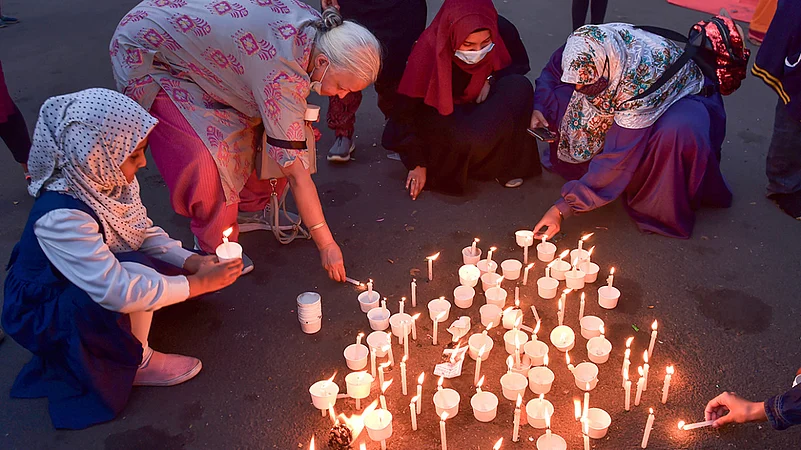Another year, another International Women’s Day. A day to celebrate women and their rights. A day that commemorates the women textile workers in 1857 America who marched against their employers to oppose unfair working conditions. It was one of the first organized strikes by working women, during which they called for a shorter work day and decent wages.
Today, Women’s Day has become an opportunity for employers across the “liberal” democracies of the world to celebrate their inclusive and diverse credentials with chocolates and special vouchers for women, even though the condition of women across workplaces remains unequal. It’s been over 150 years since the strike and much has changed for women, be it in the workforce or at home. But every year, the day comes on us as a stark reminder of all the things women are systematically denied even today - equality, safety, and identity.
Despite “landmark” judgments and so-called “progressive” discourse about gender rights, the condition of women in India continues to remain dismal. The day comes in the wake of a disquieting verdict in the Hathras gangrape-murder case of a 19-year-old Dalit girl in which three of the four accused have been acquitted. The day also comes months after the release of 11 men accused of raping Bilkis Bano and killing her family in 2002 in Gujarat. The day also comes in the wake of an RSS advisory apparently telling women how babies can be taught “sanskaar” in the womb.
In his address to the nation on India's 75th birthday, Prime Minister Narendra Modi beckoned citizens to fight misogyny and called for a "change in the mentality" towards women. But women in India continue to suffer, be it economically, socially or emotionally.
Despite strong laws against sexual violence and rape, safety continues to be an issue for women. In 2021, India recorded the highest number of crimes against women ever. As per the data released by National Crime Records Bureau, 4,28,278 cases of crimes against women were registered last year, reflecting a 15.3 per cent increase from the previous year (3,71,503 cases in 2020). The report also shows that the rate of crime against women (the number of incidents per 1 lakh population) increased from 56.5 per cent in 2020 to 64.5 per cent in 2021.
The problem becomes more layered if the victim happens to be from a socio-political or religious minority. In the last year at Outlook, we looked at several issues faced by women from Dalit and Adivasi communities, and the struggles of Muslim women in India who often face double or triple jeopardies when it comes to safety and equality.
Previously, Outlook looked at the implications of gender stereotypes on the lives of women and how successive “gender-friendly” Supreme Court judgments and legislations have failed to truly address problems faced by women across the socio-economic spectrum. Be it in the field of inheritance laws, or laws against sexual violence, the legal system often fails to understand the lived realities of being a woman in India.
In its recent issue on the scourge of “witch-hunting” prevalent in some tribal districts of India, Outlook looked at the practice of witch-hunting, not just as a gendered problem but as a social malaise and the underlying factors that perpetuate it. Headlines like ‘Woman branded as witch, burnt alive” or “Woman forced to eat excreta, paraded naked” are common in states like Jharkhand, as well in other parts of the country. Most of these stories don’t make it to the mainstream media. But data on witch hunting show that this is a consistent under-the-radar part of a genocidal culture against women.
In a 2022 issue on how women in India interact with the laws and the legal system, Outlook looked at how the judicial and legislative interventions, irrespective of how progressive they are, improve the condition of India’s women, in a society deeply rooted in patriarchal social structures. The edition titled Women-in-law took stock of significant rulings and legislations in recent times that specifically deal with women’s rights in the country.
In our issue on literature and autofiction, we looked at the genre of autofiction which has been especially employed by women and all kinds of minorities to great effect. From conflict zones to being Dalit, from remembering places to women’s lives, we explored the reach and implications of this, and associated genres across a spectrum of stories. Savita Singh wrote about how writing is liberating for women in the sense that they can express themselves from the closest quarters of their being, a trove of enormous wealth, access to which they are denied.
Last year, we also looked at feminist retellings of history and visited tales from ancient mythology and religion to understand the role and representation of women in ancient India.
On Women’s Day, we are revisiting some of these stories of women whose lives and struggles become living testimonies against the myth of Women’s Day.
















